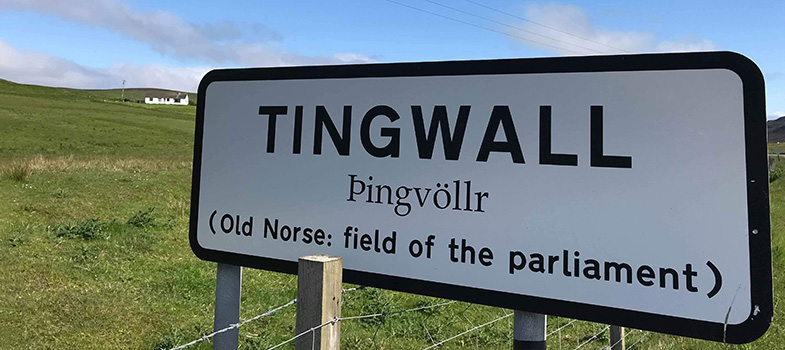Unit 9: Drama, television and film
Introduction
In this section, you will learn about the use of Scots language in drama, television and film. There have been periods in the last two centuries when Scots was considered appropriate only for limited stage, television and film use, usually for quaint or comic effect, reinforced by the tradition of Scots language comedy derived from the music hall and pantomime.
There are, of course, stage plays in Scots of major importance in the historical development of Western theatre, like Sir David Lindsay’s Ane Satire of the Thrie Estaitis (1552–4) and Allan Ramsay’s The Gentle Shepherd (1729). These works, however, came to be neglected, not least because they depended originally on acting conventions that fell out of fashion, especially when Konstantin Stanislavski’s naturalistic acting style became the dominant dramatic performance mode it is now throughout the world.
Further, both Lindsay and Ramsay employed Scottish theatre’s typical intertwining of the serious and comic, which later centuries often regarded as inappropriate and, in Lindsay’s case, obscene. Over the last century, however, there has been a rediscovery of the potential of the dramatic use of Scots for both serious and comic impact.
This section will introduce you to the history of Scots in drama and, draw your attention to the 20th century revival of the use of Scots as a serious stage language. It will also review the ways in which Scots has been presented and exploited on TV and consider the questions of accessibility that often appear to arise when Scots is used in film. Finally, it will briefly discuss issues that underlie the dramatic use of Scots language.
Important details to take notes on throughout this section:
The history of Scots as a stage language from the 16th century onwards
Scots language drama over the 20th century
Developments in the use of Scots in television drama
Scots language in film
Underlying issues affecting the use of Scots in dramatic performance-writing.
Activity 1 
Before commencing your study of this unit, you may wish to jot down some thoughts on the five important details we suggest you take notes on throughout this unit. You could write down what you already know about each of these five points, as well as any assumption or question you might have.
